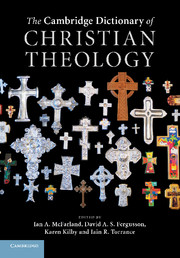O
Published online by Cambridge University Press: 05 June 2012
Summary
Oblation Derived from a Latin word for ‘offering’, ‘oblation’ has several meanings. In Catholic canon law it is used for anything given over to the use of the Church. In the more narrowly liturgical context of the mass, oblation refers to the Eucharistic elements of bread and wine, whether as brought in unconsecrated form to the altar during the offertory (the lesser oblation) or in their presentation after consecration (the greater oblation). Protestants generally restrict the use of oblation to the offertory, on the grounds that to designate the consecrated elements (in distinction from the unconsecrated bread and wine, as well as the monetary and other gifts brought forward in furtherance of the Church's ministry) as an oblation implies that in the celebration of the Eucharist the Church offers something to God rather than thankfully receiving what God offers it.
In the monastic context oblation refers to the medieval practice of dedicating children to religious life (cf. 1 Sam. 1:11, 22–8) by trusting them to the care of a monastery. Such children (known as oblates) were raised in the community until they were judged sufficiently mature to decide whether they wished to commit their lives to it by taking monastic vows. The reasons for dedicating children were varied, and often desperation (among the poor) and convenience or political calculation (among the rich) trumped religious motives.
- Type
- Chapter
- Information
- The Cambridge Dictionary of Christian Theology , pp. 351 - 363Publisher: Cambridge University PressPrint publication year: 2011

